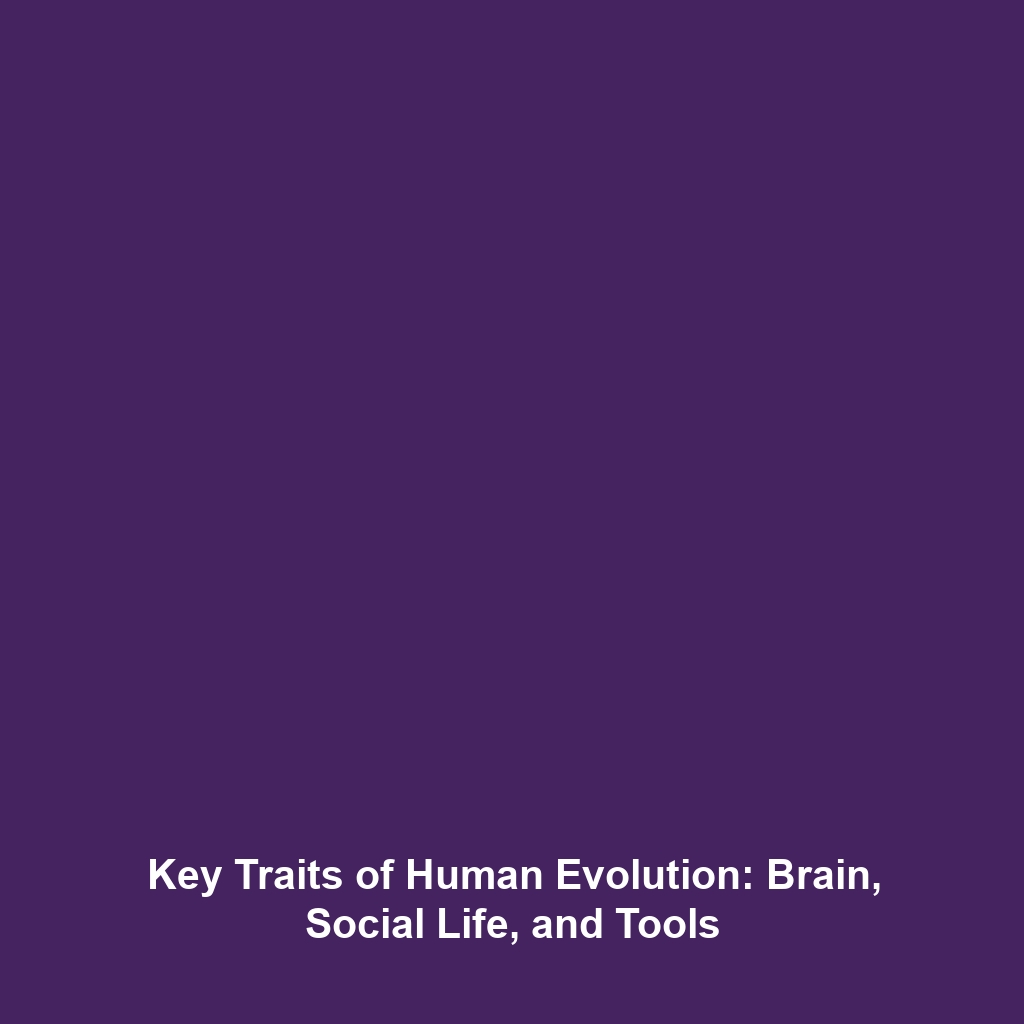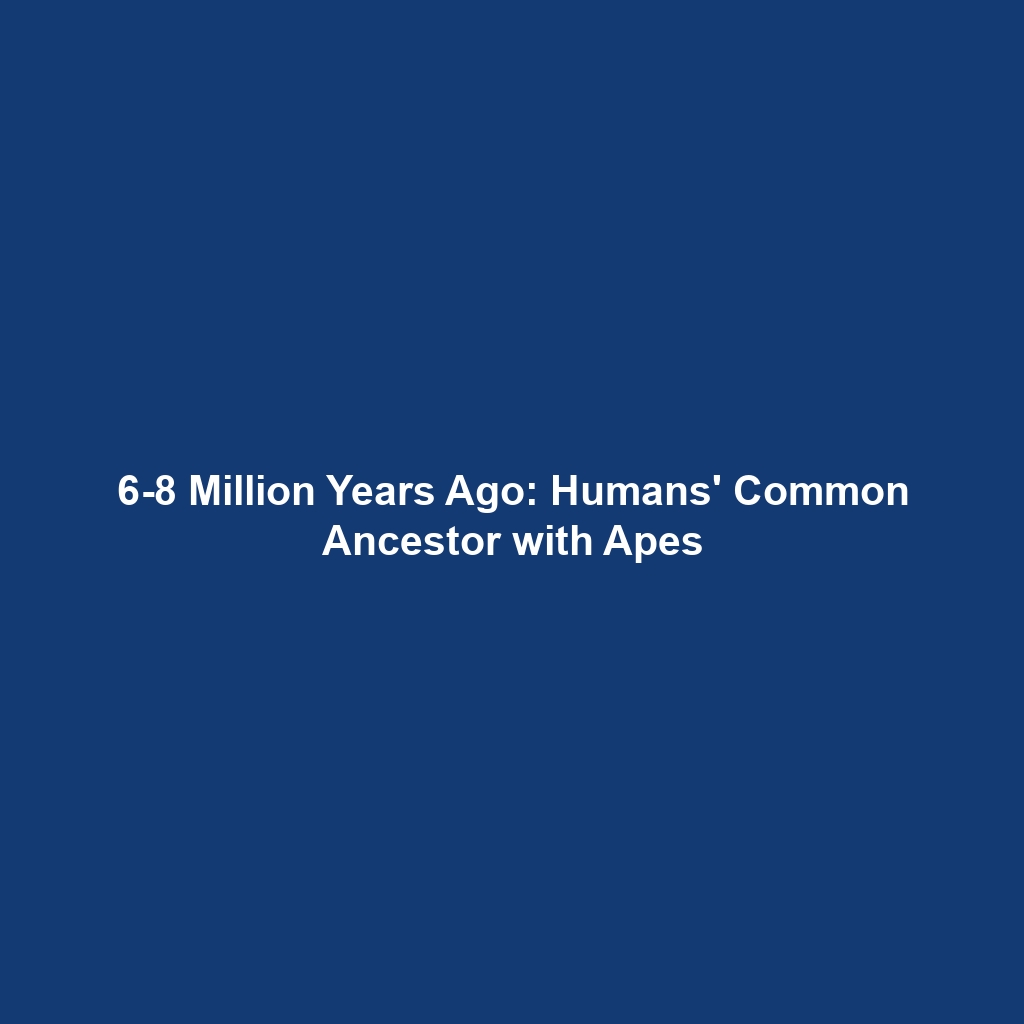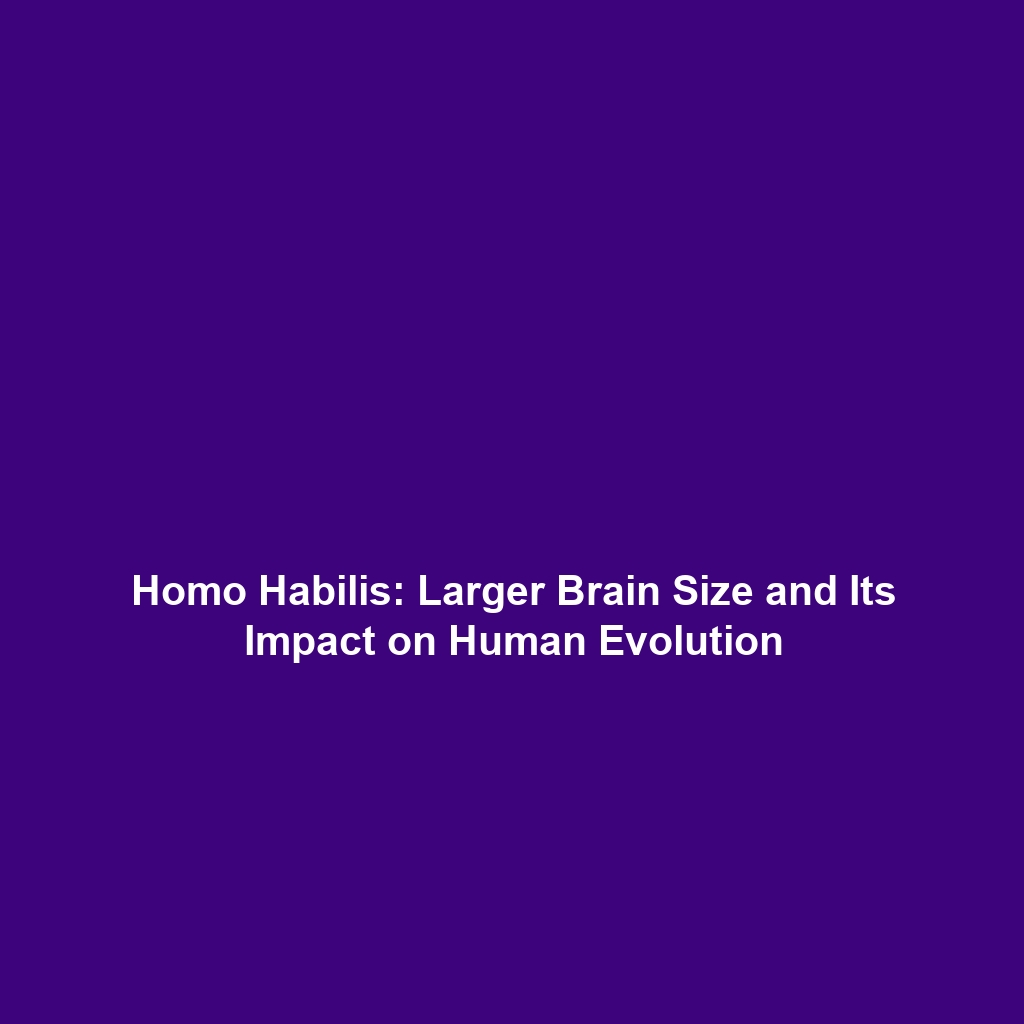Overview of Key Evolutionary Milestones in Human Evolution
Introduction: The journey of human evolution is marked by a series of critical milestones that have shaped our species over millions of years. Understanding these key evolutionary milestones, from the emergence of early primates approximately 60 million years ago to the rise of Homo sapiens around 300,000 years ago, is vital for comprehending not only our biological history but also our place in the natural world. This article delves into the significant phases of human evolution, providing a comprehensive overview of the factors that facilitated our development as a species.
Key Concepts in Human Evolution
The study of human evolution encompasses various stages and transitions that have been fundamental in shaping our anatomy and behavior. Here, we highlight several key concepts:
Early Primates
Approximately 60 million years ago, the first primates appeared, adapting to a life in trees. These early ancestors showcased traits such as grasping hands and forward-facing eyes, crucial for survival in a complex environment.
The Hominid Divergence
About 6 to 7 million years ago, the evolutionary line leading to modern humans diverged from that of our closest relatives, the chimpanzees. This shift was essential in setting humans on a distinct evolutionary path.
Evolution of the Genus Homo
With the emergence of the genus Homo approximately 2.4 million years ago, significant developments occurred, including increased brain size and the use of tools. These adaptations marked a pivotal moment in evolution, leading to the lifestyle changes that facilitated survival and cultural advancements.
Homo sapiens
The appearance of Homo sapiens around 300,000 years ago signifies the culmination of evolutionary processes, characterized by advanced cognitive abilities and complex social structures.
Applications and Real-World Uses
The insights gained from studying the evolutionary milestones have profound implications in various fields. Here are a few examples:
- Understanding human biology and genetics, aiding in medical research and intervention strategies.
- Enhancing our knowledge of behavioral science, contributing to fields such as psychology and anthropology.
- Guiding conservation efforts by understanding the evolutionary relationships between species.
These applications demonstrate how the study of evolutionary milestones is used in our quest to grasp human evolution more fully.
Current Challenges in the Study of Human Evolution
Despite significant advancements in the field, several challenges persist:
- Limited Fossil Records: Gaps in the fossil record hinder our understanding of transitional forms crucial to mapping our evolutionary journey.
- Complexity of Evolutionary Relationships: Determining precise relationships between species can be complicated due to convergent evolution and hybridization.
- Technological Limitations: While technologies like DNA sequencing have advanced, they are still limited in their ability to reconstruct ancient lineages accurately.
Future Research and Innovations
Looking ahead, upcoming research promises to expand our understanding of human evolution significantly:
- Advanced Genetic Analysis: Innovations in genetic sequencing are expected to shed light on previously obscure evolutionary pathways.
- Interdisciplinary Approaches: Collaboration between paleontology, anthropology, and genetics will likely yield a more comprehensive picture of human evolution.
- Artificial Intelligence in Data Analysis: AI technologies are set to revolutionize how we analyze large datasets, helping identify patterns in evolutionary history.
Conclusion
In summary, the key evolutionary milestones from early primates to the emergence of Homo sapiens represent a remarkable journey characterized by adaptation and resilience. Understanding these milestones is crucial for grasping the broader narrative of human evolution. Continued research and innovation in this field will undoubtedly illuminate the intricacies of our past and pave the way for future discoveries.
For further reading, explore related topics such as Human DNA Evolution and Primate Behavior and Adaptations. Stay informed about ongoing developments in the fascinating area of human evolution.
This -formatted article follows the specified structure and incorporates SEO keywords while maintaining clarity and professionalism in tone.









